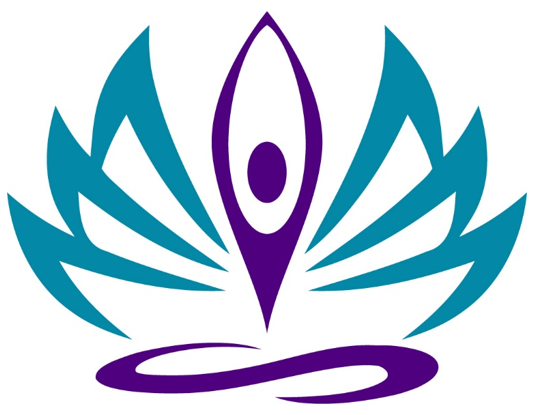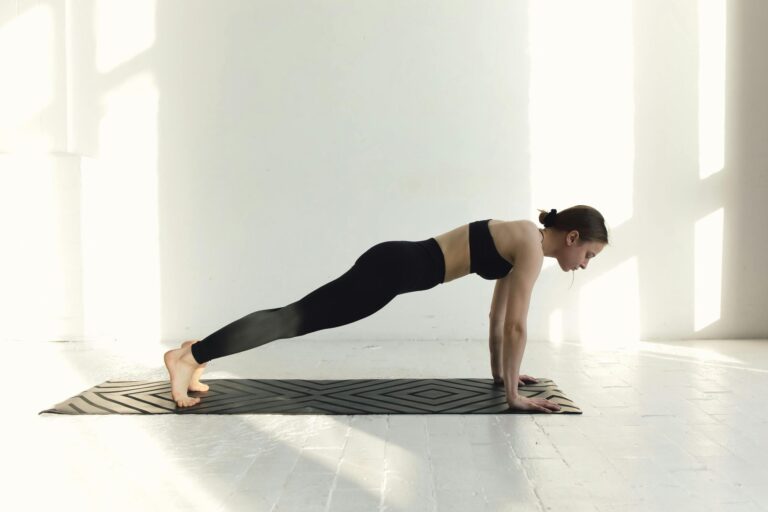Yoga for emotional balance - How to calm your nervous system and find inner peace
Our everyday lives are often characterized by sensory overload, tension and emotional overload. Many people feel permanently in "survival mode" - driven, restless, exhausted. Emotional balance seems far away in such moments. But this is precisely where yoga can provide targeted support by calming the central nervous system, stimulating the vagus nerve and bringing the body into a state of deep regeneration.
What does emotional balance mean?
Emotional balance describes the ability to regulate emotions instead of being overwhelmed by them. It is not about "always staying calm", but about being able to switch flexibly between tension and relaxation - depending on what is needed at the time. In biological terms, this means that your nervous system is good at switching back and forth between the sympathetic nervous system ('fight or flight') and the parasympathetic nervous system ('rest and digest').
The vagus nerve - the key to inner peace
The vagus nerve is the longest nerve of the parasympathetic system. It runs from the brain stem through the neck, across the heart and diaphragm and into the abdomen. It is like an internal communication system that constantly sends signals from the body to the brain and vice versa - especially about the state of safety or threat.
Good vagus activity means:
- Calm heartbeat
- Deep breaths
- Loosened facial muscles
- Ability to socialize
- Feeling of security in your own body
Yoga - especially calm, slow and mindful practices - can specifically stimulate the activity of the vagus nerve.
How yoga affects the nervous system
Yoga combines breathing, movement and mindfulness - precisely the elements that regulate the nervous system. Certain poses, breathing techniques (pranayama) and meditative mindfulness direct the focus inwards, slow down the pulse and signal to the body: "You are safe."
Mechanisms of action:
- Deep diaphragmatic breathing stimulates the vagus nerve mechanically through the diaphragm.
- Slow movements promote parasympathetic activity.
- Gentle pressure from body parts to each other (e.g. child position) signals protection and security.
- Soft gaze and facial expressions relax the facial nerve, which is closely linked to the vagus nerve.
- Silence reduces the absorption of stimuli and causes the nervous system to "shut down".
Yoga exercises for emotional balance
I have recorded a complete 90-minute yoga video for emotional balance that will help you to calm your nervous system. You can find it here:
Alternatively, here are some simple exercises that can calm your nervous system and promote emotional balance:
1. tadasana with exhalation through the mouth
- Stand hip-width apart on the mat, feet grounded and evenly loaded. The legs are active, the pelvis is in a neutral position, the sternum is gently raised and the shoulders are relaxed.
- The arms hang loosely beside the body, the gaze is soft and directed forward.
- Breathe in deeply through your nose and out through your mouth - preferably with an audible sigh.
- Imagine that with every exhalation you let go of what you no longer need.

Effect: This simple exercise regulates the nervous system in seconds, connects you to the present moment and relieves emotional tension.
2nd child position with wide knees
- Bring your knees mat-wide apart with your big toes touching. Place your forehead on the floor or on a cushion with your arms out in front or behind you.
- Focus on letting go completely and flowing into the ground.
- Optional: Place a block under your forehead to increase the feeling of safety and grounding.

Effect: Retreat posture that provides protection, calms the nervous system and creates a safe space for emotional regeneration.
3. buzzing bee sound (Bhramari Pranayama)
- Sit up straight and gently close your eyes.
- Close your ears with your thumbs or - in a second round - place your hands gently on the heart area.
- Breathe in through your nose and make a soft humming "Mmm" sound as you breathe out.
- Feel where you can perceive the vibrations in your body - especially in your face, neck and chest.
- Repeat this for 6 breaths or as long as it feels good.

Tip: This exercise also works wonderfully in everyday life - e.g. when driving or cooking - without covering your ears.
Effect: The vibrations stimulate the vagus nerve in the throat, have a direct effect on the limbic system and calm the mind.
4. rocking in supine position (bilateral stimulation)
- Lie on your back and pull both knees towards your chest.
- Grasp your shins or knees and begin to rock gently from left to right.
- Breathe calmly and evenly.

Effect: The rhythmic movement stimulates both hemispheres of the brain (bilateral stimulation), has a calming effect and supports emotional processing and integration.
5. meditation
- Get into an upright, comfortable position.
- First notice the sounds around you - without judging them.
- Then direct your attention inwards and feel the natural flow of your breath.
- You can imagine how your breath gently massages you from the inside. An inner image of 'safety' or 'home' can also help to calm your nervous system.

Effect: This meditation strengthens your ability to self-regulate and promotes emotional resilience.
6. shake out
- After meditation or at the end of your practice: shake your hands and arms vigorously while sitting or standing upright.
- Imagine how you shake off everything that has annoyed or burdened you during the day.
- When it feels right, stand up and shake your whole body - preferably with small jumps, noises or movements.

Effect: Shaking out has a strong discharging effect, activates body awareness and helps to get rid of excess tension and stress hormones. It brings you into contact with your body and promotes emotional release.
Conclusion
Emotional balance is not a state that we achieve once - but a process of constant rebalancing. Yoga can be a powerful way to consciously accompany this process. By stimulating the vagus nerve, using targeted breathing techniques and calming movements, you can regulate your central nervous system, reduce stress and cultivate a deep sense of inner stability and security.
Tip for your practice: Less is more. Instead of dynamic flows, a short, strong activation followed by slow, conscious movements can often achieve more when it comes to emotional regulation. Give your body and mind time to really "arrive" and practice at your own pace, focusing on your breathing.







